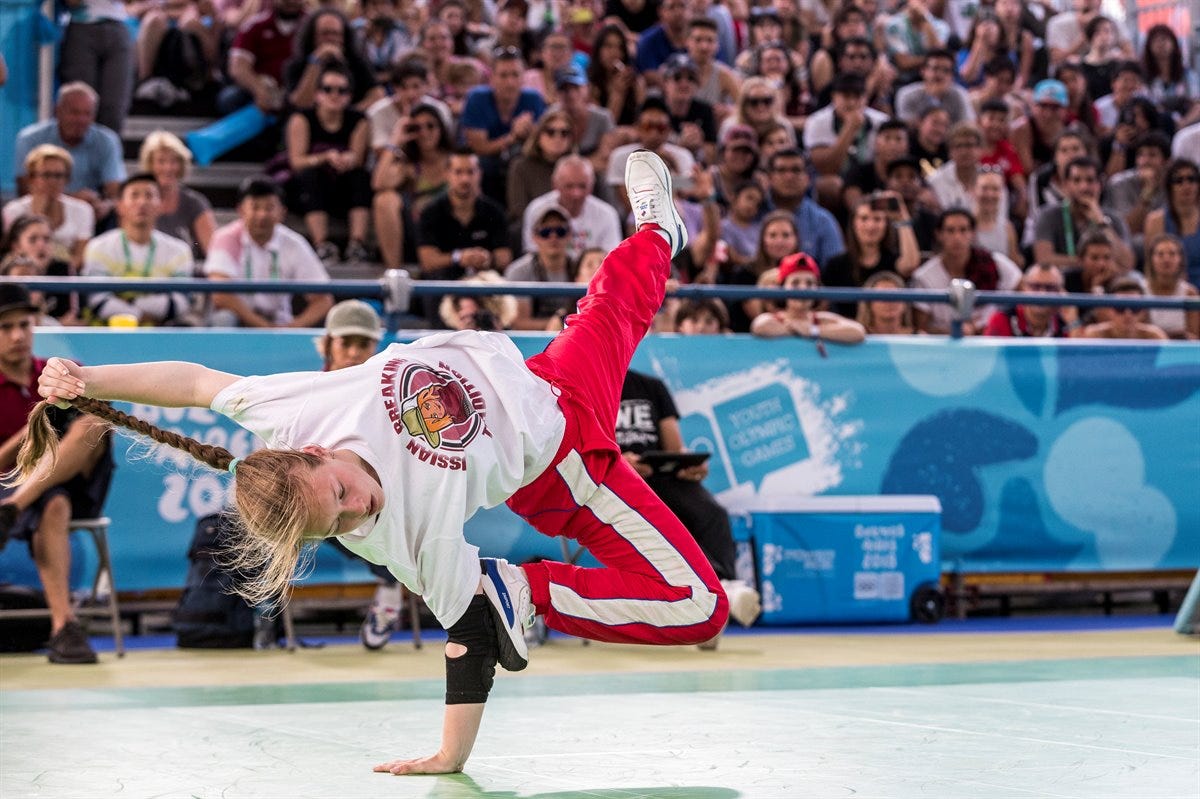Understanding the Olympics Breaking Schedule

The Olympics is a global spectacle, with billions of viewers tuning in to watch athletes compete for the ultimate prize. To ensure that fans around the world can enjoy the action, a carefully crafted breaking schedule is essential. This schedule determines when different events will be held, taking into account various factors to maximize viewing opportunities and ensure fair competition.
Factors Influencing the Olympics Breaking Schedule
The Olympics breaking schedule is a complex puzzle that considers various factors, ensuring a balanced and engaging experience for athletes and spectators alike. The schedule is a result of careful planning and negotiation, taking into account the following:
- Time Zones: The Olympics typically involve athletes from different countries and continents, meaning events may be held at various times to accommodate different time zones. This ensures that athletes can compete at their peak performance times and that viewers around the world can watch events live.
- Athlete Availability: The schedule must consider the availability of athletes, particularly for events with multiple rounds or qualifying stages. Athletes need time to rest and prepare for their next competition, and the schedule must allow for this.
- Broadcast Rights: Broadcast rights play a crucial role in the Olympics schedule, as broadcasters often have preferences for when certain events are held. The schedule must balance the needs of broadcasters with the desire to provide fair competition and optimal viewing experiences for fans.
Ensuring Fairness and Optimal Viewing Experiences
The Olympics breaking schedule is designed to ensure fairness and optimal viewing experiences for all stakeholders. This is achieved through various strategies:
- Spread Out Events: The schedule is designed to spread out events across different days and times, preventing scheduling conflicts and allowing viewers to enjoy a diverse range of competitions.
- Prime Time Coverage: Key events are often scheduled for prime time in major television markets, maximizing viewership and providing a platform for athletes to showcase their talents.
- Rest Days: The schedule incorporates rest days for athletes, allowing them to recover and prepare for their next competitions. This ensures that athletes are performing at their best and that the competition remains fair.
Examples of Schedule Structure
The Olympics breaking schedule is constantly evolving, adapting to the changing needs of athletes, broadcasters, and fans. The following examples illustrate how the schedule is structured to achieve fairness and optimal viewing experiences:
- Swimming Finals: Swimming finals are often held in the evening, allowing for prime-time coverage in major markets and providing athletes with the opportunity to perform at their best in front of a large audience.
- Track and Field Events: Track and field events, particularly the finals, are often scheduled for the evening, maximizing viewership and creating a thrilling atmosphere for athletes and spectators alike.
- Team Sports: Team sports, such as basketball and volleyball, are often scheduled throughout the day, providing viewers with a variety of options and ensuring that athletes have sufficient time to recover between games.
Analyzing the Impact of the Breaking Schedule

The Olympic breaking schedule, with its intricate web of events, timings, and athlete participation, plays a crucial role in shaping the overall competition dynamics. It influences athletes’ performance, recovery, and even the strategic decisions made by coaches and teams. Understanding the impact of this schedule is vital to appreciate the complexities and nuances of Olympic competition.
Impact on Athlete Performance and Recovery
The Olympic breaking schedule presents unique challenges for athletes, demanding a delicate balance between peak performance and effective recovery.
- Performance: A tightly packed schedule can lead to fatigue and reduced performance, particularly for athletes competing in multiple events. This is especially true for sports requiring high levels of physical exertion or mental focus, where the cumulative effects of consecutive competitions can significantly impact performance.
- Recovery: Adequate recovery time is essential for athletes to replenish energy stores, repair muscle tissue, and prevent injuries. A compressed schedule can limit recovery opportunities, increasing the risk of burnout, fatigue, and injury.
- Strategic Considerations: Athletes and coaches must carefully consider the impact of the schedule on performance and recovery. This involves strategically planning training and competition schedules to optimize performance and minimize the risk of injury.
Benefits and Drawbacks of Simultaneous Events
The Olympic schedule often features multiple events happening concurrently, creating a dynamic and engaging atmosphere. However, this simultaneous schedule also presents both benefits and drawbacks.
- Benefits: The simultaneous nature of the schedule allows for greater flexibility and variety for spectators, who can enjoy a diverse range of events. It also creates a sense of excitement and anticipation, as multiple competitions unfold simultaneously.
- Drawbacks: One major drawback is the potential for conflict, where multiple events vying for attention can dilute the impact of individual competitions. This can also create logistical challenges for athletes and coaches, who may have to juggle multiple commitments and events.
Scheduling Strategies in Different Olympic Sports
Olympic sports employ diverse scheduling strategies to optimize competition dynamics and athlete performance.
- Individual vs. Team Sports: Scheduling strategies often differ between individual and team sports. Individual sports, like swimming or gymnastics, typically have a more compact schedule, allowing athletes to focus on their individual performance. Team sports, such as basketball or soccer, often have a more extended schedule, requiring athletes to manage the demands of multiple games and practices.
- Event Complexity: The complexity of the event also influences scheduling. Sports with multiple rounds or phases, like tennis or archery, may have a more staggered schedule to allow for adequate rest and recovery between rounds.
- Competition Dynamics: Scheduling strategies are also influenced by the competitive dynamics of the sport. For example, in sports with a high degree of physical contact, such as rugby or boxing, the schedule may be designed to minimize the risk of injury by providing sufficient recovery time between matches.
Exploring the Viewer Experience: Olympics Breaking Schedule

The breaking schedule of the Olympics significantly influences the viewer experience, particularly for those watching from different time zones. The availability of events, the timing of broadcasts, and the use of technology all contribute to how viewers engage with the Games.
Impact of Time Zones
The Olympics bring together athletes from all corners of the globe, and this global nature presents a challenge for viewers. Different time zones mean that events may occur at inconvenient hours for some audiences, especially those living in regions far from the host city. For instance, a primetime event in Tokyo could be broadcast in the early morning hours in South America. This can impact viewership, especially for live events.
Role of Technology
Technology plays a crucial role in mitigating the challenges posed by time zones and event availability. Live streaming services, on-demand replays, and social media platforms allow viewers to access events at their convenience. For example, a viewer in Europe could catch a live stream of a swimming event that occurred earlier in the day in Asia. Similarly, highlights and summaries of events are readily available online, allowing viewers to stay updated even if they miss live broadcasts. These technological advancements have significantly enhanced the viewer experience, making the Olympics more accessible to a wider audience.
Optimizing the Viewing Experience for a Specific Target Audience, Olympics breaking schedule
Imagine a scenario where the target audience is families with young children in the United States. To optimize their viewing experience, a hypothetical schedule could be designed with the following considerations:
- Primetime Broadcast of Popular Events: Scheduling popular events like gymnastics, swimming, and track and field during primetime hours in the US would maximize family viewership.
- Weekend Availability: Scheduling events on weekends, when families have more free time, would increase the likelihood of viewing.
- Family-Friendly Programming: Offering a mix of events that appeal to both adults and children, such as team sports and individual competitions, would enhance the overall viewing experience for families.
Yo, the Olympics breaking schedule is wild, like trying to catch a falling star. I’m so glued to the TV, I’m practically one with the couch. Speaking of couches, check out this hilarious couch joke that’ll have you rolling! Anyway, back to the Olympics, I’m just hoping I don’t miss any of the epic action.
Gotta stay on top of that schedule, man!
Yo, the Olympics breaking schedule is wild, man. Like, who knew breakdancing would be a thing? It’s all about the moves, right? But, I’m kinda more into the whole Dunkin’ Donuts boycott rumble, check it out , it’s a whole other level of hype.
But yeah, the Olympics breaking schedule is still pretty dope. It’s like, a whole new world of athleticism, you know?
